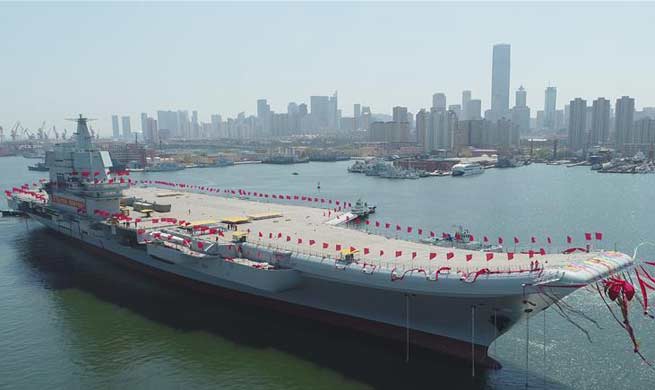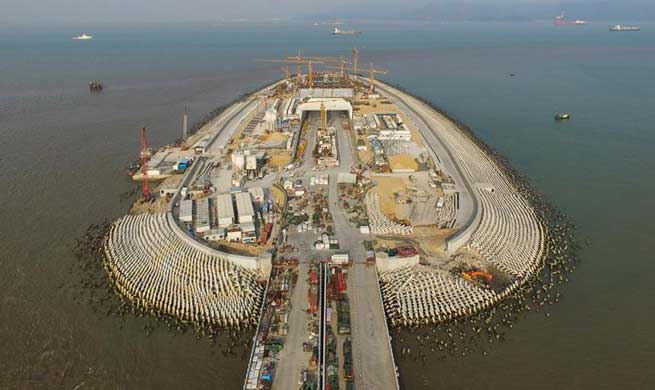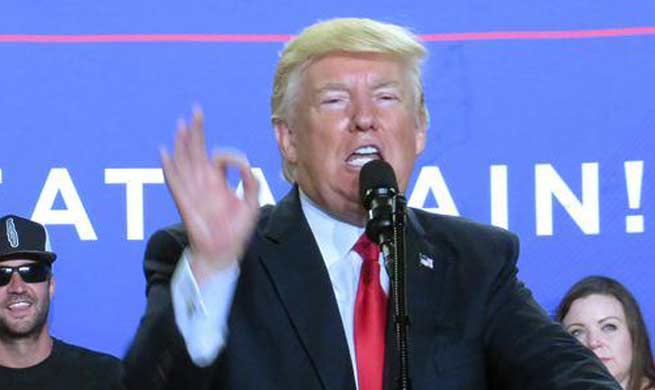
File photo: Workers work at the Liaoning section of a high-speed railway in northeast China's Liaoning Province, April 11, 2017.(Xinhua/Yang Qing)
BEIJING, April 30 (Xinhua) -- China's manufacturing sector expanded for the ninth straight month in April, but the pace has slowed as authorities stepped up efforts to contain financial risks.
The manufacturing purchasing managers' index (PMI) came in at 51.2 in April, lower than the 51.8 recorded in March, according to the National Bureau of Statistics.
The reading fell short of market expectations but still stayed above the boom-bust line of 50.
"As policymakers shift their emphasis to address financial risks, it will inevitably have an impact on liquidity, financing costs and growth expectations," said Zhang Yiping, a researcher at China Merchants Securities.
China has had a strong start this year, with GDP expanding 6.9 percent in the first quarter, well above the annual growth target of around 6.5 percent.
The industrial sector posted 28.3-percent year-on-year profit growth in Q1, adding to signs of a stabilizing economy.
The PMI data released Sunday indicated that pressure remains on growth in the second quarter.
The sub-index for production stood at 53.8 in April while the sub-index for new orders came in at 52.3, both down from a month ago. The low growth was a result of contraction in high energy consumption industries, lower prices at factory gates, and slower expansion in both imports and exports, said NBS senior statistician Zhao Qinghe.
"While both the production and new orders indices are still positive, the gap between them has widened, which needs to be closely watched," he said.
Commodities prices such as steel, coal, as well as midstream products such as chemical fiber have all seen a notable corrections in April, partially driven by financial deleveraging, said investment firm China International Capital Corporation (CICC) in a research note.
China has recently stepped up efforts to contain asset bubbles and financial risks, including real estate controls in some cities, as a stabilizing economy provides more room for tightened policies.
Monetary conditions also tightened more visibly, with the central bank steering clear of interest rate cuts and avoiding tinkering with reserve requirement ratios over the past year. Instead, it employed a range of tools, such as reverse repos and lending facilities to manage liquidity.
"Although the ongoing monetary tapering and regulatory tightening may reduce the 'excess' built-up in highly leveraged financial products, the tightening effect is unlikely to become restrictive to economic growth," according to CICC.
Sunday's data also showed that China's non-manufacturing sector continued to expand in April at slower pace, with the index standing at 54, down from 55.1 in March.
Tepid growth in the manufacturing sector weighed on the index, dragging down growth in manufacturing-related service industries, according to Zhao.
While both the manufacturing and non-manufacturing indices showing signs of ebbing, the breakdown of the data pointed to the better economic structure that China desires.
The sub-index for consumer goods manufacturing, for example, continued upward to reach 52.2 in April.
"This indicates that consumer demand is still stable, and consumption will still be a key to economic growth this year," said Zhang.

















